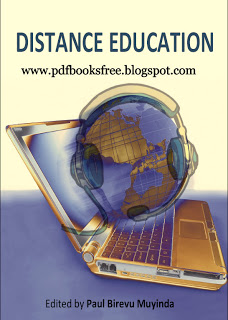
Title of the book is “Distance Education” Edited by Paul Birevu Muyinda.
Education has become the amount one demanded goods for social and economic transformation for each developing and developed economies. So the amount of persons going and returning to high school has become too massive to be handled by existing brick and mortar learning establishments. Besides, the bulk of womb-to-tomb learners don’t have the time to become regular students.
Distance education is changing into the answer to the same challenges. Distance education has been outlined because the mode of study wherever the learner is separated in time and house from the establishment and tutors providing the schooling. Within the early formation of distance education, the ‘gap’ between the gap learner and their establishment was coated by self tutorial paper based mostly study materials. The emergence of knowledge and technology (ICT) has ever-changing the horizon of distance education. Additional of the gap learning programmes and courses square measure being ported onto on-line learning platforms. This can be significantly thus for distance learning programmes from developed countries wherever access to the web presents no explicit challenges. In developing countries, emulsified distance education remains pervasive. In these nations, paper based mostly self tutorial materials still type the majority of the gap learner support media.
These materials square measure increased with ICT support. The support ICTs used include: offline CDs, on-line learning management systems and mobile devices. the selection of support ICTs is occasioned by their accessibility to the learners. Mobile devises square measure increasing permeant the support sphere for distance learners in developing countries as a result of, in most of those countries, itinerant possession amongst university students if averaging at over ninety nine. As distance learning massifies education, its critic’s square measure more and more difference that the standard of graduates from this mode isn’t nearly as good as those from the traditional mode. This criticism has triggered an enormous wave of analysis into frameworks for up the standard of distance learning graduates.
Therefore, distance learning. in contrast to different modes of delivery, boosts of a wealth of quality assurance frameworks that have more and more boosted its quality. Besides, by its terribly nature, distance education, is learner focused. Learner cantered approaches breed a hands with the badly required twenty first century skills. Further, associate degreeyone World Health Organization has pursued studies through distance education can testify that it provides a chic learning expertise because it permits an interaction of assorted learning experiences from completely different learning contexts. Thus, contrary to the ‘belief’ of the critics of the gap education mode of delivery, the utilization world continues to soak up graduates from distance education programmes and courses while not a fuss. As additional and additional individuals get to understand the potential of distance education, standard universities can haven’t any selection.



this is an excellent blog…
Recitation Quran